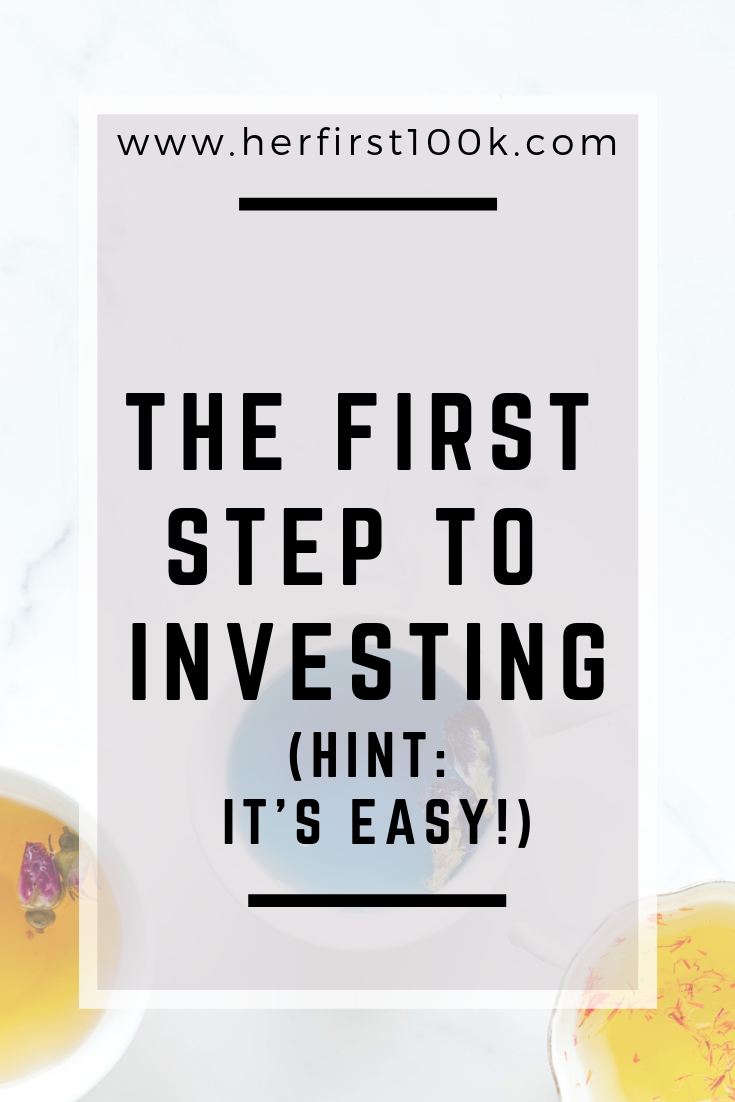The following article may contain affiliate links or sponsored content. This doesn’t cost you anything, and shopping or using our affiliate partners is a way to support our mission. I will never work with a brand or showcase a product that I don’t personally use or believe in.
The First Steps to Investing
Before we get started – if you’re a new investor or just looking for a community to join as you begin your investing journey, we’re building a one-of-a-kind, non-judgemental community where you can learn exactly how to invest, build wealth, and receive exclusive access to Her First $100k. Learn more at www.herfirst100k.com/treasury
Originally published on POPSUGAR, from the Dumpster Dog Blog
Should you invest in Lululemon stock or Tesla stock? Facebook or Apple? Tech or health care?
Have you studied your balance sheets? Forward-looking price-to-earnings ratios? Oil prices and housing starts?
J/K! None of that shit matters. (At least, not for most of us.)
With investing, the most important decision you make is not which stock you pick but whether you invest in stocks at all, or bonds, and cash, and other broad categories of investments (called “asset classes”). This big picture decision is called “asset allocation” and should be what gets the majority of your attention.
How does one determine asset allocation? By analyzing personal goals, which are the ovule of all investing decisions. They’re unsexy and boring so folks tend to rush through ’em, but skipping this basic is like agreeing to marry someone without first checking to see if s/he has a job, wants kids, is potty trained, etc. First things first!
When looking at any pool of money, you must always first ask: What is this money for? In other words, what is the goal? Then, think about your goal through these three lenses:
-
Time Frame
-
Risk
-
Knowledge of how the different asset classes (stocks, bonds, cash, etc.) have performed and behaved over time.
Before we talk about No. 1 and No. 2, let’s talk about No. 3 for a minute — a quick review of stocks and bonds is in order!
Understanding the Different Asset Classes
A stock is a tiny sliver of ownership of a company. When a company grows, your teeny piece of the pie should (hypothetically) grow with it. A bond, on the other hand, is a contract. You are loaning your money to some entity (a company, the government), and they pay you a stated rate of interest for using your money.
Stocks are expected to make more money than bonds, but that reward comes with a parallel risk! You don’t get 7 percent to 10 percent annual returns in the stock market fo’ freebies! And stock market risk comes in the form of volatility.
Volatility is a total mindfuck. You’ve heard this word used before, but take a minute to marinate in what it means: money you worked your tush off to save could lose a ton of value at any moment and quickly. In 2008, the stock market was down 50 percent. If you had invested $100,000 in the stock market, a few months later you had $50,000.
Bonds, on the other hand, are predictable. You’re probably going to get a lower average rate of return, but there’s less volatility than with stocks. That’s not to say that bonds are risk-free; they aren’t. The only risk-free option is keeping your money in cash.*
Next, let’s explore two examples of saved money. Using our goals, we can determine how to invest. The first is via a down payment on a house. The second is via retirement. Don’t forget to consider the time frame and risk!
Down Payment For a House
You’re saving for a down payment on a home and hoping to buy within five years. In the meantime, how should you invest the money?
Goal: Save money to put a down payment on a home.
Time Frame: Short. To be used in five years or once enough is saved.
Biggest Risk: Losing any money before making the purchase.
How to invest? Cash. If you want to use the money to buy a house (or for a wedding or a car, etc.) over the next five years and can’t afford to lose any of that money, you really can’t invest. I know, it’s a bummer. If there was some risk-free way to make money in five years, we would all be doing it. But there can’t be because as a rule, the reward must be equal to risk.
(There are some “high-yield” online banks and CDs at local banks/credit unions that will provide you a little extra oomph.)
Retirement
You know retirement is going to be the biggest expense of your life, so you’re putting (at least) 10 percent of your salary into your 401(k) account at work. How should you invest?
Goal: To have enough money to live in retirement.
Time Frame: Very long. This money needs to be around for a lifetime — 50+ years for the average POPSUGAR reader.
Biggest Risk: Running out of money in retirement.
How to invest? Mostly stocks with some bonds. Because you want to maximize growth and have a very long time frame to work with, you will want to invest a majority of your retirement dollars in the stock market.
Not having enough money to take care of ourselves is the biggest risk we take with retirement money. It can feel counterintuitive, but the risk is not this short-term wackiness or volatility in the stock market! Volatility is scary, sure, but the stock market always corrects itself and moves higher with time. And young people have time! Therefore, the real risk you take right now is being too conservative, too soon with your investment strategy.
Depending on your comfort with the stock market, you can invest most of your retirement money in stocks. Personal finance theory tells us that between our 20s and 40s, it is advisable to keep between 10 percent and 30 percent of our retirement portfolios in bonds and the rest in stocks. These bonds will act as a psychological buffer when the stock market hits raging, narcotic-fueled Mel Gibson lows and provide some important variety in your strategy.
Get Your Money Invested
For the average person, investing isn’t about picking the hottest stock. Investing is about understanding yourself and your money goals and matching those goals with one of the investment types that exist in the world. (Can’t make something exist that doesn’t.) It’s not sexy stuff, but these are the core principles that successful investors know in their bones.
Right now you might be thinking, “OK great, lady, but now what? How the heck do I invest my 80 percent stocks and my 20 percent bonds?” Not to fret, this part is easy! To fulfill stock and bond quotas, just use index funds, which are funds that invest in the “whole” stock market or a representative sample of it and for close to free.
Index funds come in both stock and bond flavors and should be offered by your 401(k) plan or at whatever brokerage bank you keep your IRA or Roth IRA.
Alternatively, use a Retirement Target-Date fund. Here, you choose the fund that corresponds to your retirement year (e.g. 2050 or 2060), and it does this work for you. As you inch closer to your retirement “target date,” the fund proactively shifts into more bonds. Unfortunately, not all Target-Date funds are created equal. As far as I’ve seen, Vanguard makes the best — they are low-cost and invest only in index funds (as opposed to costly managed funds).
Hopefully, this discussion of goals provides you with some inspiration as much as anything. It’s easy to get caught up in the bullsh*t, but don’t. Especially with retirement money, get your tushy in there! You’re taking a risk by doing nothing at all.
*If you define risk as the possibility of losing any money, then the cash is not technically risk-free either. As prices rise over time, due to a phenomenon called inflation, the value of your cash diminishes.
Want to learn more about investing in a fun, four-part online class? Learn directly from Amanda (the bomb author of this piece!), ask questions, and walk away with a personalized investing plan. Stop worrying about whether you’re “doing it right” and finally feel confident in your investment plan and knowledge! Learn more about Invested Development here, and read course testimonials here. [Use code TORI for $20 off!]
Feeling overwhelmed and still not sure where to start? Join the waitlist for our new financial education community!
RESOURCES
I get asked all the time: what are your favorite money management tools?
Treasury: We’re building a one-of-a-kind, non-judgemental community where you can learn exactly how to invest, build wealth, and receive exclusive access to Her First $100k.
Capitalize: Did you recently switch jobs or launch your own business? Instead of losing money, roll over your old 401(k) into a brand new or existing IRA with Capitalize. They handle all the paperwork for you and for FREE, including calling the 401(k) provider on your behalf, completing paperwork, and sending faxes.
Chase Freedom Unlimited: My go-to travel and dining rewards card that I recommend.
Deserve: The card I recommend for building credit. Great for students.
The $100K Club Facebook Group: Need some honest money conversations in your life? Join my free community to get your burning questions answered.
Opinions, reviews, analyses & recommendations are the author’s alone and have not been reviewed, endorsed, or approved by any of these entities.’



